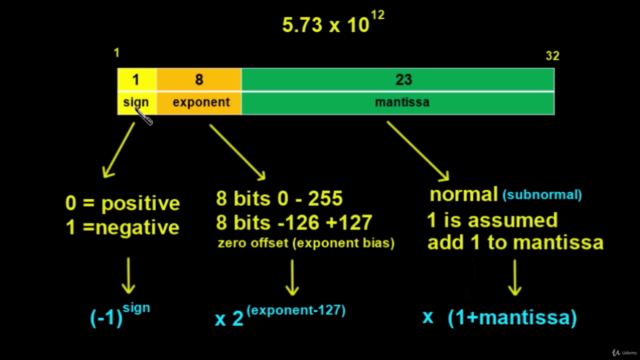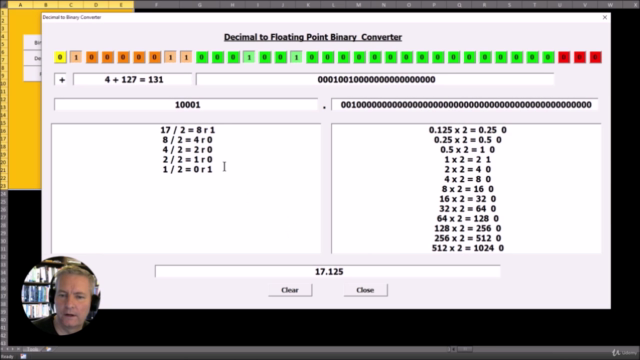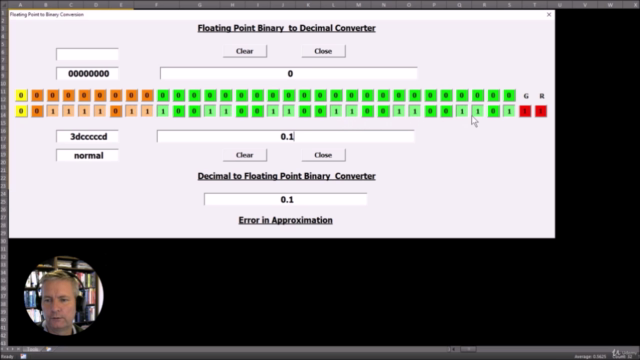Design a Floating Point Unit 1 - Numbers

Why take this course?
🎓 Design a Floating Point Unit 1 - Numbers
🚀 Headline: Computer Architecture and Design (FPU)
Are you ready to dive into the world of floating point numbers and the intricacies of computer architecture? If so, "Design a Floating Point Unit 1 - Numbers" is your gateway to understanding one of the most fundamental components of modern computing. In this comprehensive course by Ross McGowan, you'll embark on an enlightening journey through the realms of floating point representation, conversion, and precision as outlined by the IEEE 754 standard for single-precision 32-bit binary numbers.
Course Overview:
📚 What You'll Learn:
-
Introduction to Floating Point Numbers: Gain a foundational understanding of what floating point numbers are and why they're crucial in the digital realm.
-
IEEE 754 Standard Explained: Discover how this standard governs single precision 32-bit binary floating point numbers, and learn its importance in ensuring consistency and predictability across different systems.
-
Decimal to Binary Conversion: Master the art of converting between decimal (base 10) and binary (base 2) representations of floating point numbers with ease.
-
Exploring Normal and Subnormal Numbers: Understand normal numbers, subnormal (denormal) numbers, and their significance in representing very small or zero values.
-
Rounding Modes: Explore the concept of nearest even rounding and other rounding modes to comprehend their impact on the final result.
-
Precision and Range: Learn about the precision and range limitations inherent in floating point arithmetic, and how they affect calculations.
Course Highlights:
🔍 In-Depth Analysis of IEEE 754: With a detailed breakdown of each component of the standard, you'll understand not just what the standard says but why it's structured the way it is.
⚙️ Practical Application with VBA Tool: Utilize an innovative Microsoft Excel VBA tool created by Ross McGowan to automate conversions and validate results. This hands-on approach will solidify your understanding of floating point numbers.
📖 Solid Foundation for FPU Design: By mastering the fundamentals in this course, you'll be well-equipped to progress to more advanced topics like designing the arithmetic operations for a Floating Point Unit (FPU) in later courses.
Why Take This Course?
🎓 Real-World Applications: Understanding floating point numbers is essential for anyone working in computer engineering, software development, data science, and beyond.
🛠️ Design Skills: Learn the design principles behind floating point arithmetic operations that will be crucial when you move on to designing a full FPU.
🤝 Community Engagement: Join a community of like-minded individuals who are passionate about computer architecture and design.
Your Next Steps:
🎉 Upon Completion: You'll have a thorough understanding of floating point numbers, ready to tackle the next course in the series, "Design a Floating Point Unit 2 - Multiplier," where you'll delve into the design of one of the key operations within an FPU.
Don't miss this opportunity to expand your knowledge and skill set in computer architecture and design with a focus on floating point units. Enroll in "Design a Floating Point Unit 1 - Numbers" today and set yourself on the path to becoming an expert in the field! 🚀💻
Enroll Now and embark on your journey towards mastering computer architecture and design with confidence! 🎉
Course Gallery




Loading charts...